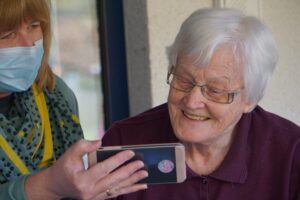According to the 2019-20 Australian Government Budget Review Index total spending on health was estimated to be $81.8 billion. This staggering figure represented 16.3 percent of the government’s total expenditure.[i]
The promised projection of expenditure in 2022-23 is estimated to be $132 billon as the Federal election draws near, with further promises to commit $537 billion over the next four years.[ii]
This includes $1.7 billion towards the Primary Health Care 10 Year Plan which is about strengthening and reforming the primary health care system in a decade.[iii]
 One objective in this Plan is to ensure Telehealth remains a part of our health system and with statistics of more than 100 million services already delivered by March 2020, you can see that Remote Patient Monitoring plays a significant part in the future of Australia’s healthcare system.
One objective in this Plan is to ensure Telehealth remains a part of our health system and with statistics of more than 100 million services already delivered by March 2020, you can see that Remote Patient Monitoring plays a significant part in the future of Australia’s healthcare system.
“The rapid adaptation to telehealth and the positive response from medical practitioners and patients has been phenomenal. Since March 2020, more than 100 million telehealth services have been delivered to 17 million Australians across the country.” Minister for Health and Aged Care Greg Hunt
RPM technology helps connect patients to support clinicians whose ultimate goal is continuity of care.
For health service providers this means higher productivity levels of quality of care through remote monitoring, consultation, diagnosis, and treatment using telemedicine and telehealth.
It means efficiency through streamlined processes, reduced waiting times, and reduced duplicate testing.[iv]
Essentially lowering the costs of healthcare.
According to the Australian Institute of Health and Welfare (AIHW), the realm of digital technology can improve the functioning and relationships between different parts of the health system environment. [v]
This implies that digital technology including RPM can help:
- improve response to emergencies with quick access to clinical and service data
- strengthen monitoring of public health threats and ensure a more timely and effective response through access to real-time information
- improve understanding of the health and service delivery needs of the population
- allow data-supported insights and priorities, including the ability to monitor health system performance and quality indicators.
The use of digital health technologies such as RPM creates opportunities for a nationwide healthcare system that aims to empower individuals, families and communities to maintain and improve their health through timely access to quality services.
For further information on RPM please contact Aaron Grandison at agrandison@rpm-h.com.au
[i] https://www.aph.gov.au/About_Parliament/Parliamentary_Departments/Parliamentary_Library/pubs/rp/BudgetReview201920/Health#:~:text=Key%20figures,expenditure%20(see%20Table%201).
[ii] https://www.health.gov.au/ministers/the-hon-greg-hunt-mp/media/record-investment-in-the-future-of-australias-health-system
[iii] https://www.health.gov.au/resources/publications/australias-primary-health-care-10-year-plan-2022-2032
[iv] https://www.aihw.gov.au/reports/australias-health/digital-health
[v] https://www.aihw.gov.au/reports/australias-health/digital-health
